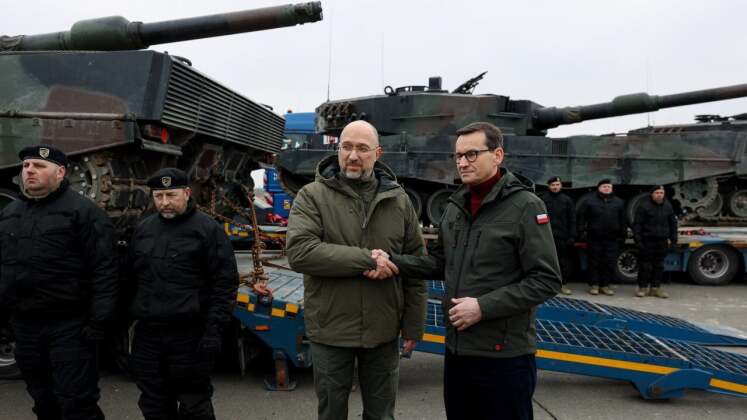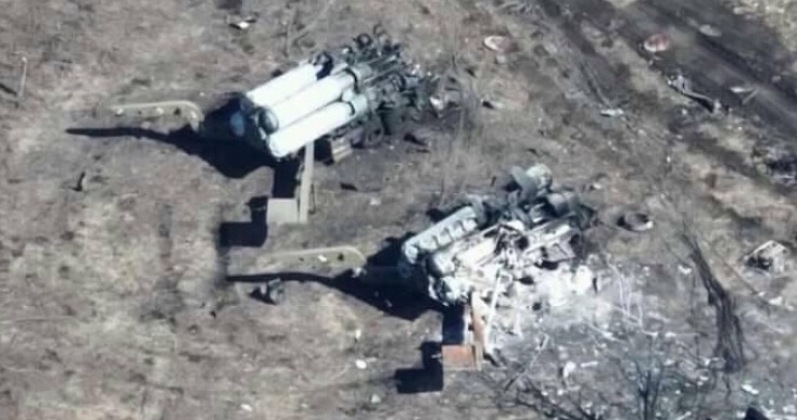Now in its 16th month, the ongoing Russo-Ukraine war has seen artillery, armored vehicles, missiles, and various other types of ground force armaments depleted at breakneck rates, which continues to rapidly deplete the stockpiles of both sides. While Russia has responded by reallocating some of its export capabilities to its own armed forces and investing in restoring some of its Soviet-era mass production capabilities, which have hitherto been the world’s largest in nearly every type of ground and air combat equipment On top of that, Ukraine’s very limited defense sector is forced to rely heavily on arms transfers from Western countries after depleting its own Soviet-era stockpile. While western powers were in many cases conservative about arming supplies to Ukraine, with the UK, Poland and the Baltic states being the notable exceptions, this happened quickly as securing Russia’s defeat was seen as a core Western bloc interest changed. However, as NATO’s own stockpiles, especially in Europe, are depleted, Western powers are having to look further and further afield to arm Ukraine. Meanwhile, Russia has supplemented its own expanded arms production capabilities with limited purchases from Iran and North Korea, but its ground forces are thought to have more industrial capacity than NATO countries combined.

In the most recent of many Western efforts to find new sources of armaments, the June 2 report that the United States is seeking to acquire TNT from Japan to facilitate expanded production of artillery shells for Ukraine, a shortage of TNT is seen as a major problem hindering greater production bottleneck. While Japan’s policy prohibits the supply of weapons to active war zones, Tokyo is reportedly expected to make an exception because TNT has non-military uses as part of its policy to support Ukraine’s war effort. Japan is one of three non-Western countries backing the West’s economic sanctions against Russia, along with Singapore and South Korea. Seoul, also under pressure to allow arms supplies to Ukraine, has finally decided to send its stockpile of artillery to the U.S. for the purpose of arming Ukrainian troops. . TNT from Japanese factories will reportedly be used to make 155mm shells – a growing number of calibers that the Ukrainian army has deployed after receiving deliveries from several NATO members. That’s because artillery is widely considered to have been at the heart of both sides’ war efforts. While the German and Italian artillery supplied to Ukraine has been found to be of particularly poor quality, and often bordering on completely unusable, the US has reportedly served well in combat with artillery such as the M777, the US M982 Excalibur guided artillery shell Considered a particularly serious threat to the front lines.

In addition to Japan and South Korea, Morocco and Jordan have become important arms suppliers to Ukraine. The former supplies T-72 tanks, while the latter confirmed the supply of Gepard self-propelled anti-aircraft guns on June 1. Jordan received 60 used guns and 350,000 rounds of 35mm ammunition from the Netherlands in 2013, and has previously supplied Western powers with anti-tank weapons and short-range air defense systems to arm Ukraine. The possibility that Jordan’s retired British Challenger 1 tanks could also provide is also repeatedly speculated, as despite their age, they are still more powerful than many of the vehicles currently being sent to war zones, such as the Leopard 2A4 and M-55 tanks. British intelligence agencies have reportedly been particularly active on black markets in Africa and the Middle East, trying to procure weapons that could be used in the war in Ukraine.

Regarding the continued efforts to procure armaments for Ukraine, British Defense Secretary Ben Wallace warned on June 2 that the rapid depletion of Western stocks has forced Western countries to turn to the international market to purchase weapons in response to Russia’s war. “We’ve seen the reality that we’re all running out,” he said of the remaining armaments of NATO members. Warnings have grown dire about the state of Ukraine’s stockpiles, especially its air defenses, which Western powers have very limited replenishment capabilities and are thought to be on the verge of collapse due to depletion. In response, Britain and its European allies have put considerable pressure on the United States to allow the supply of F-16 fighter jets to Ukraine, which could partly compensate for its growing surface-to-air missile capabilities by providing improved air-to-air capabilities limitation. However, the age of the F-16 and lack of availability of modern variants calls into question its viability for such high-intensity combat against opponents with world-leading air defenses. The fighter class has been in service since the 1970s and has been deployed with Ukraine had little survivability advantage over the Soviet-built jets.

London has also played a leading role in sending ground forces to conflict zones, with Royal Marines confirmed to have been on the frontlines conducting high-risk missions against Russian forces from April 2022, while SAS units have been widely reported Also on site. These have performed roles on the ground ranging from combat to logistics and command and control as part of a wider “stealth network” of Western personnel. NATO’s satellite network, airborne surveillance and electronic warfare assets also played a major role, as did contractors from various Western nations. A growing number of analysts predict that weapons numbers issues and the industrially attritive nature of warfare mean that the availability of massive armaments could be a major determinant of war – and whichever side sees its operations severely limited by shortages first is likely to lose. Consequently, arming Ukraine is so high a priority that a very serious depletion of the domestic capabilities of the NATO members’ militaries is often tolerated.

